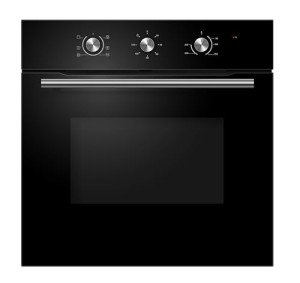Are You Getting The Most From Your Builtin Oven?
The Comprehensive Guide to Built-In Ovens: Features, Benefits, and FAQs
Built-in ovens are a popular choice for modern kitchen areas, using versatility, effectiveness, and a smooth style that incorporates flawlessly into cabinets. This article will explore the numerous elements of built-in ovens, including their functions, benefits, installation choices, maintenance tips, and answers to commonly asked concerns.
What is a Built-In Oven?
A built-in oven is developed to be installed within kitchen cabinetry and is readily available in numerous configurations, such as single or double ovens. Unlike freestanding ovens, built-in designs offer a streamlined appearance and offer more flexibility in kitchen design. They are available in electric, gas, and steam options, catering to a series of cooking choices.
Features of Built-In Ovens
Built-in ovens are loaded with functions that boost cooking experiences. Here are a few of the most typical functions to think about:
Feature
Description
Self-Cleaning
Lots of models include a self-cleaning function that burns residue at heats, streamlining upkeep.
Convection Cooking
This function utilizes a fan to distribute hot air, cooking food more uniformly and rapidly.
Smart Technology
Some ovens come geared up with Wi-Fi connectivity, permitting users to control the oven remotely by means of smart device.
Several Cooking Modes
Consist of choices such as baking, broiling, roasting, and air frying, offering flexibility for various dishes.
Temperature level Probe
Keeps an eye on the internal temperature level of food, guaranteeing completely prepared meals each time.
Sleek Design Options
Readily available in numerous surfaces (stainless-steel, black, white) to match kitchen decoration.
Advantages of Built-In Ovens
The setup of a built-in oven brings many advantages to any kitchen:
- Space Efficiency: Built-in ovens take full advantage of kitchen space, offering a tidy and organized appearance without sacrificing performance.
- Boosted Cooking Performance: With sophisticated features like convection cooking and accurate temperature controls, built-in ovens often outshine standard models.
- Style Flexibility: These ovens can be set up at eye level, enabling simple access without flexing down, which can be specifically helpful for individuals with physical restrictions.
- Enhanced Resale Value: A properly designed kitchen with high-quality built-in appliances may interest potential purchasers, boosting total property worth.
- Customization Options: Many brand names use personalized styles that fit the particular measurements and aesthetic of private kitchen areas.
Setup Options
When choosing a built-in oven, understanding the setup options is crucial. Here are the most common configurations:
Single Built-In Oven: Ideal for smaller sized kitchen areas, these units use enough space to prepare a range of meals concurrently, ideal for everyday cooking.
Double Built-In Oven: Best suited for devoted cooks and large families, double ovens enable simultaneous cooking at two different temperatures, suitable for meals that require diverse cooking approaches.
Mix Steam and Oven: A hybrid solution that integrates the advantages of conventional baking with steam cooking. Ovens And Hobs is excellent for retaining moisture in foods, making it best for baking bread or roasting meats.
Upkeep Tips for Built-In Ovens
Keeping a built-in oven is necessary for its durability and ideal performance. Here are some useful maintenance ideas:
Regular Cleaning: Use the self-cleaning feature when essential, and clean down the exterior and interior surfaces regularly to avoid grease accumulation.
Check the Seals: Inspect the oven door seals for any wear or damage to ensure appropriate insulation and cooking effectiveness.
Temperature level Calibration: Occasionally check the temperature level precision utilizing an oven thermometer, particularly if cooking times appear longer than usual.
Ventilation: Ensure appropriate ventilation around the oven to avoid getting too hot, specifically for built-in models that may be surrounded by kitchen cabinetry.
FAQs About Built-In Ovens
1. Are built-in ovens more costly than freestanding models?Yes, built-in ovens tend to be more pricey due to their style, setup requirements, and extra functions. However, their advantages can validate the expense in the long run.
2. Can you install a built-in oven yourself?While some handy people may try to install a built-in oven, it is advised to work with a professional to make sure correct setup, ventilation, and safety requirements.
3. What is the typical lifespan of a built-in oven?The typical life-span of a built-in oven is around 10 to 15 years, depending upon usage and upkeep. Regular care can assist extend its longevity.
4. Are built-in ovens energy efficient?Lots of modern built-in ovens are developed with energy efficiency in mind, integrating features like insulation and accurate temperature controls that may minimize energy usage compared to older models.
5. Can a built-in oven be repaired if it breaks?Yes, built-in ovens can often be fixed. It is advisable to call a licensed specialist for diagnoses and repairs to guarantee safety and compliance with guarantee contracts.
Built-in ovens are an exceptional addition to any modern kitchen, supplying a mix of style, functionality, and advanced cooking features. With the right knowledge about their features, benefits, and upkeep, property owners can make educated choices to improve their culinary experiences. As kitchen design trends continue to progress, the built-in oven stays a staple for those looking to mix aesthetic appeals with performance in their cooking spaces.
